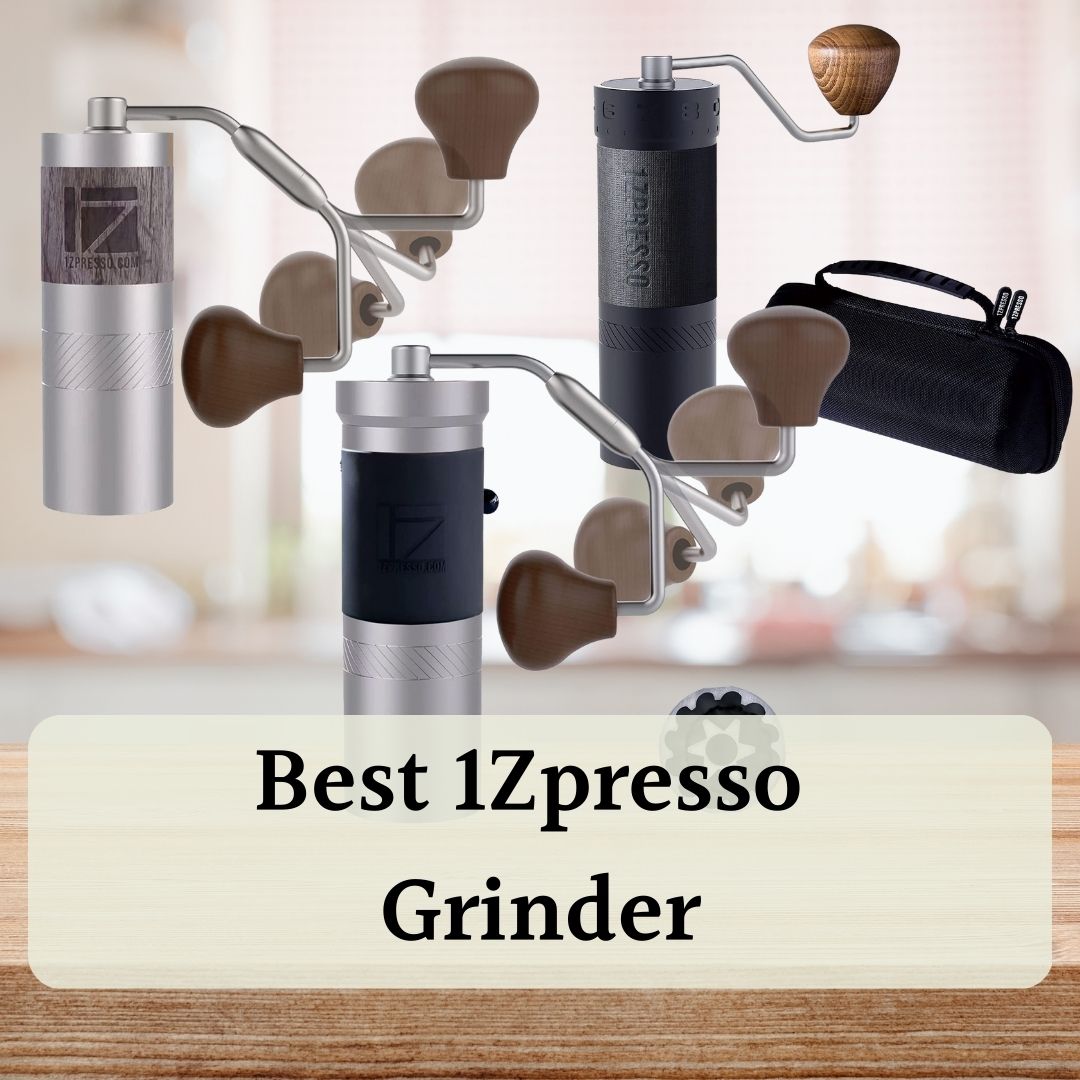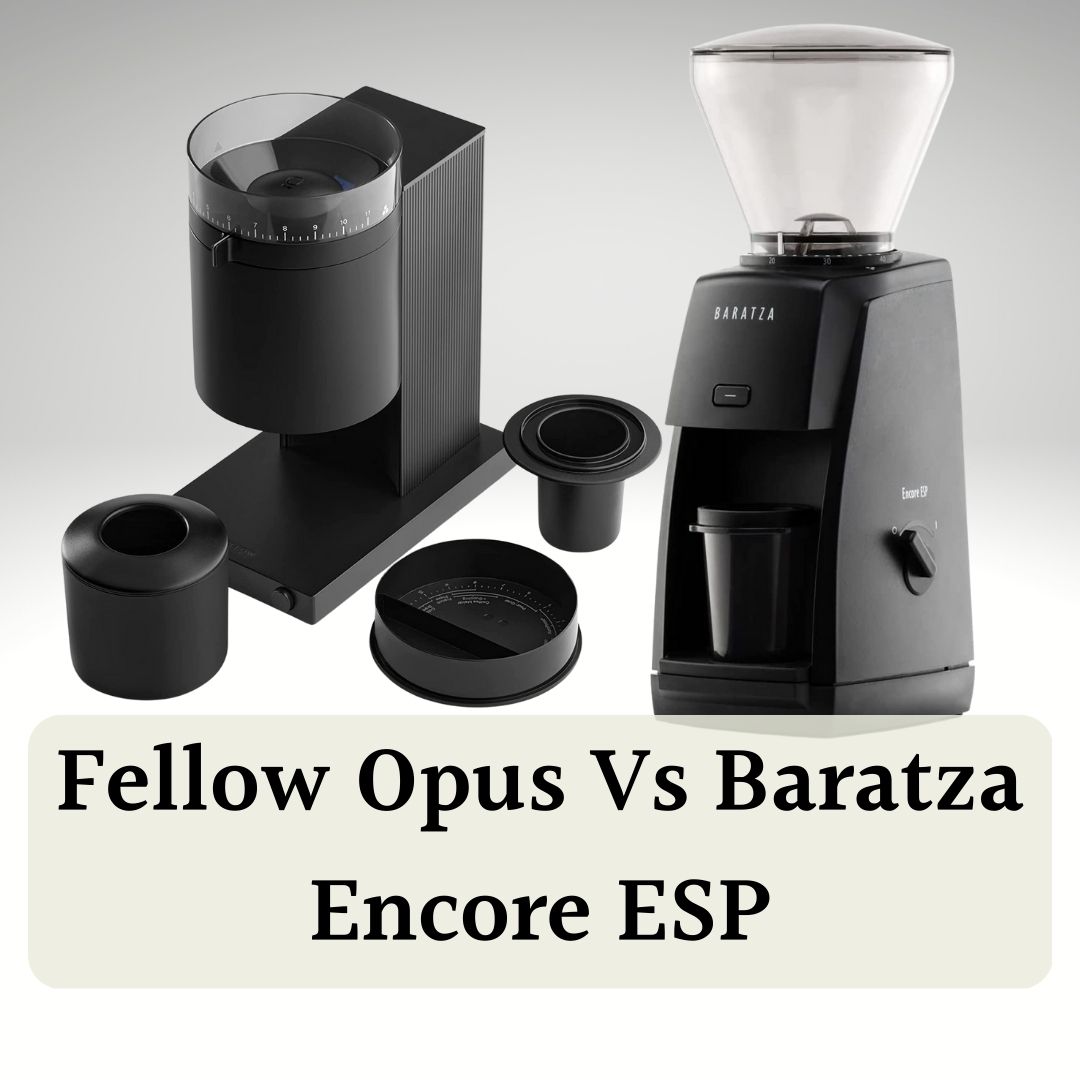Fellow recently upgraded their classic coffee Ode grinder to a Gen 2 model that has many asking, “What’s the big deal?”
As a filter coffee fan, the Ode Gen 2 upgrades are a big deal. The new flat burrs can grind finer and produce a high-clarity taste that will bring out more sweetness in your coffee. It rivals high-end burr upgrades, and there are several ease-of-use features that improve on the Gen 1 in all the best ways.
In this Fellow Ode Gen 2 review, I’ll explore the small but mighty changes that take the functionality of the Ode to the next level. I’ll also discuss the value of this coffee grinder versus its predecessor and peers.
Product Overview

Fellow Ode Gen 2 highlights:
- 64mm in-house designed flat steel burrs
- 31 grind settings
- Vertically mounted burrs
- Anti-static ionizer
- Auto-stop grinding
The Fellow Ode Gen 2 is one of the best coffee grinders available for filter coffee enthusiasts. It improves on the Gen 1 in both convenience and grind quality through an upgraded 64mm flat burr set and a redesigned grind chute featuring an anti-static ionizer.
This coffee grinder is designed for pour-over coffee, and it excels at it. It prioritizes cup quality while making for an easy-to-use grinder. It’s compact, elegant, easy to use, and delivers a balanced and enjoyable brewed cup of coffee.
This reimagined Fellow Ode grinder is a single-dose grinder with no presets or programmable doses. It features just a single button on the front to start grinding, and the grinder automatically shuts itself off when it no longer detects coffee beans in the burrs. The 31 grind settings are suitable only for filter coffee and coarser brew methods but won’t grind fine enough for espresso.
Pros
Low static
Great grind retention
Excellent cup quality
Cons
Can’t grind espresso
Pricier than the Gen 1
Plastic components feel cheap
Fellow Ode Gen 1 Vs Gen 2: What’s Changed?
The first Fellow Ode launched in 2020 after a Kickstarter project, and Fellow made some major upgrades to the late 2022 design. The differences between the Fellow Ode Gen 1 and the Fellow Ode Gen 2 come down to three major changes: the burrs, the hopper, and the addition of anti-static technology.
The stock burrs on the Ode Gen 2 are designed and manufactured in-house, where Fellow dramatically improved the geometry over the Gen 1 burrs. These new burrs create a more balanced cup with equal parts body and clarity. They’re versatile enough to brew a rich dark roast and a bright, sweet light roast. The new burrs can also grind finer than the original version.
The hopper on the Gen 2 was enlarged to a slightly bigger 100g capacity, allowing you to brew up to 1.5L of filter coffee from a single grind. It also features a slightly steeper angle sloping down into the burr mechanism. This quality-of-life improvement keeps coffee beans from being left behind and allows for smoother bean feeding. I like that the Gen 2 keeps its small footprint.
Perhaps the most interesting upgrade on the Ode Gen 2 is the anti-static ionizer. This innovative tech reduces static (and resulting mess) that inherently is created from grinding coffee beans produced when you grind coffee beans. You get a much cleaner workspace and fresher coffee since less grounds get stuck inside the grinder. This ionizer is almost totally unique to the new Fellow Ode, and it works so well that it’s comparable to using RDT (Ross Droplet Technique) on the Gen 1.
Also, there is a small quality of life improvement: less noise. The Fellow Ode was always a quiet grinder with an auto shut-off feature, but the Gen 1 made an annoying beep when grinding was complete. This is gone on the Gen 2, and the quiet grinding is pleasant.
These improvements overcome most of the common gripes with Gen 1. They both improve the ease of use of the Gen 2 and produce a better-tasting cup of coffee.
Fellow Ode Gen 2 Feature Breakdown
Design and Durability
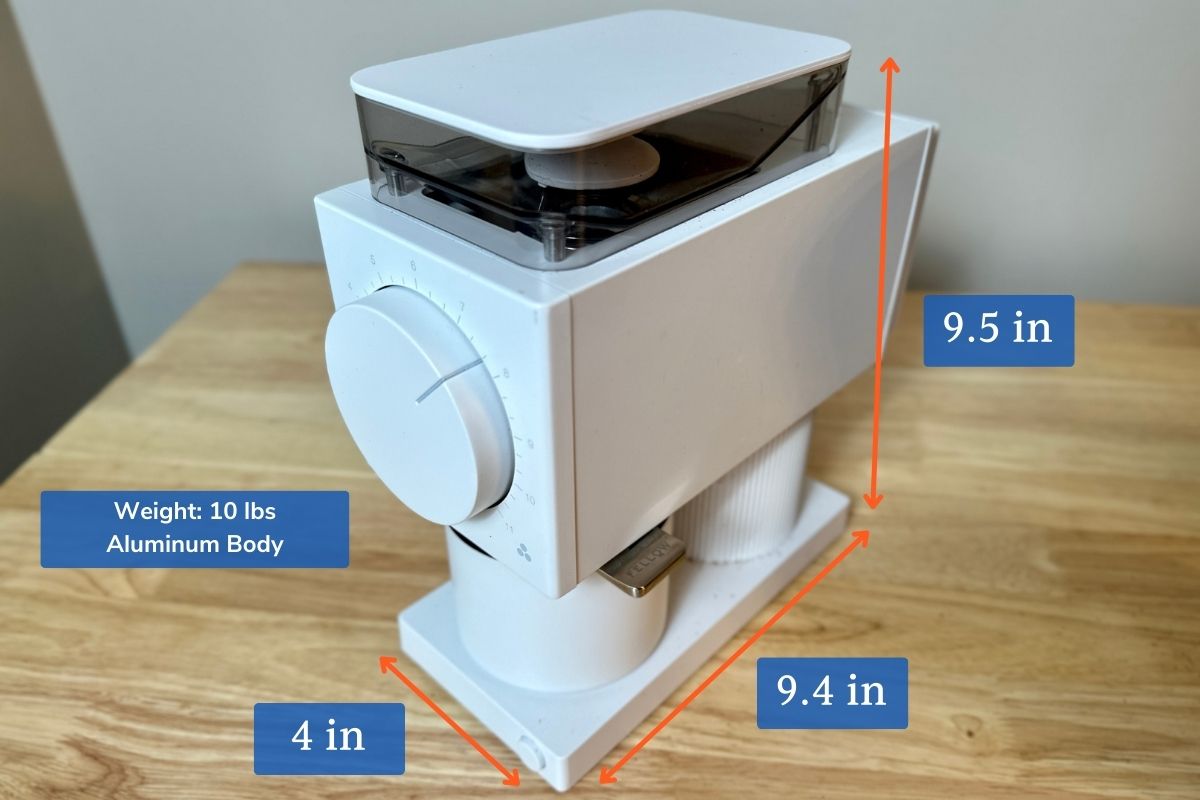
From the outside, the Fellow Ode Gen 2 looks nearly identical to the Gen 1 and shares many design features. The grinder comes in either black or white, and I’m a big fan of the sleek, monochrome look.
This grinder is small, at only about 9.5 in. tall and about 4 in. wide. It has a smaller footprint than almost any other electric grinder, thanks to the small hooper and catch cup. I enjoy the monochrome design and small footprint, and this grinder will blend into any kitchen aesthetic. It weighs about 10 lbs., so despite it still feels sturdy.
Most of the outside is aluminum, except the hopper and the catch cup lid, which are plastic and rubber, respectively. These components feel less well-designed than the rest of the grinder. Neither the hopper lid nor the catch cup lid ever feels like they fit snugly in place.
I recommend removing the catch cup lid as it gets loose, and you’ll have to remove it anyway to pour out ground coffee. Frankly, I don’t quite understand its purpose. This a minor gripe, and the rest of the grinder looks and feels top-notch. Just like the Gen 1 before it, the Gen 2 is well-designed both inside and out.
The interface is minimalist in that it’s very easy to use. The large dial on the front is clearly numbered and gives plenty of settings to dial-in filter methods. Also, the Fellow Ode is quiet. We found it produced 74 decibels of noise compared to 84 decibels for other electric grinders (anything under 80 dB is quite tolerable). The low RPM of the motor and design means you won’t wake anyone up in the morning.
Burr and Grind Quality
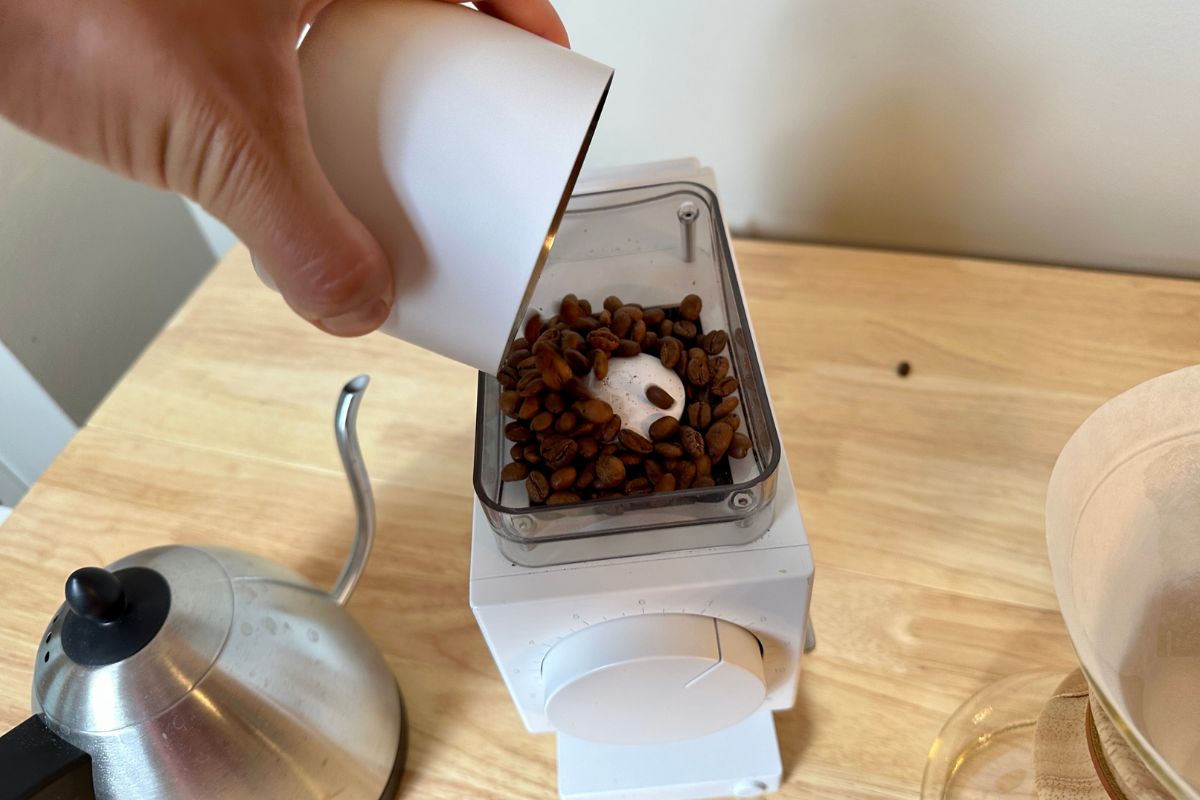
The 64mm stainless steel flat burrs on the Fellow Ode Gen 2 provide exceptional grind quality and consistency. The burrs are the brainchild of Fellow’s Nick Terzulli with input from coffee extraordinaire Lance Hendrick. They went through 23 prototypes before the final burrs, which achieved their consistency through geometry and design alone. There’s no special alloy coating or treated metal added to the basic steel structure.
The Gen 2’s stock burrs produce only marginally more fines than Fellow’s top-of-the-line SSP burrs, which cost more than twice as much. This leads to a very balanced cup that highlights both body and clarity across all roast levels. I personally can’t taste the difference between the SSP burrs and the stock Gen 2 burrs unless I’m really looking for it; that’s how good these new stock burrs are. The Gen 2 burrs can also be purchased separately and retrofitted onto the Fellow Ode Gen 1.
Like the Gen 1, the flat burrs are fitted vertically to reduce grind retention. Most flat burrs are horizontal and need high centrifugal force to push out ground coffee. The vertical burr design of the Ode uses gravity to move coffee through the burrs, similar to a conical burr setup.
However, the real improvements in grind retention come from the anti-static technology in the grind chute. The redesigned grind chute of the Fellow Ode Gen 2 features an ionizer that removes the static buildup produced when grinding. Ionizers produce positive or negative ions that attach to other ions caused by static electricity in grounds.
This prevents coffee from getting stuck in the burrs and spraying around the opening of the dose cup. This ionizer works so well that I didn’t notice a difference on the Gen 2 with or without RDT. This innovation streamlined workflow and improved grind retention.
That said, the Fellow Ode still retains a non-trivial 1-1.5 grams of coffee. The Ode has a small knocker on the right side, which you can tap to shake out some more loose grounds. I use the knocker to reduce retention, along with crude methods like hitting the top of the grinder.
Grind Settings

The Fellow Ode Gen 2 is a stepped-adjustment grinder with 31 different settings. Each of these settings is designed for filter and immersion brewing but will not grind fine enough for espresso.
31 settings may not seem like a lot, but since cold brew, French press, and pour-over don’t require the same precision as espresso, 31 settings offer plenty of flexibility for dialing in the medium and coarse range. The finest setting is suitable for a low dose, high extraction pour-over, but Turkish coffee and espresso are well out of the Gen 2’s range.
Adjustments are made via a large dial on the front of the grinder. The underside of the hopper lid displays a chart that details which settings are best for different brew methods. The Ode Gen 1 had a similar chart, but the chart on the Gen 2 is laid out in a format that’s easier to read and understand.
Flavor Profile and Use Cases
The Ode Gen 2 produces an enjoyable cup of coffee for almost any flavor profile. The detail in the burrs creates a lot of clarity and sweetness in light roast coffees on pour-over.

However, brew methods like French press and cold brew, which tend to create a thicker, more earthy body, also benefit from the richness and fullness this coffee grinder creates. This means that dark roast coffees are just as suitable on this iteration of the Ode as light roasts.
I’ll reiterate that this grinder does not grind fine enough for espresso; it is meant for filter and immersion brewing only. I think it performs best when used for a balanced pour-over, like a V60. A Central American coffee I brewed was rich and chocolatey but had a clear fruity sweetness that brightened the cup. That profile, to me, typifies the strengths of this grinder: a perfect balance of clarity and body.
Value
The 2nd generation of the Ode is about 20% more expensive than the Ode Gen 1, and it’s a good value depending on your situation. If you don’t have a great pour-over grinder, the Fellow Ode Gen 2 is one of the best you’ll find in its price bracket, and I think it’s worth the extra few bucks considering its improvements over the Gen 1.
However, if you already have the Gen 1, I don’t recommend replacing it with the Gen 2. You can buy the Gen 2 burrs for less than $100 and retrofit the Gen 1. That change will make your grinder very close to a new Gen 2, except for the anti-static ionizer and removed beep post-grinding.
Should You Upgrade From A Gen 1 to a Gen 2?
If you’re in the market for a new pour-over grinder and don’t already have a Fellow Ode Gen 1, then this new and improved Ode is an excellent choice. It’s more expensive than other options, but the coffee quality and design are worth the investment. It’s a versatile coffee grinder that works for any coffee except espresso.
If you already have the Fellow Ode Gen 1 and want to upgrade, consider buying the Gen 2’s stock burrs and installing them on the Gen 1. It will improve the quality of your coffee grinder without the hefty price tag associated with the Gen 2.
Alternative Grinder Options
Baratza Sette 30

Sette 30 highlights:
- No programmable doses
- No micro adjustments ring
- Same quality and consistency of grinding
- Functional, but basic
The Baratza Sette 30 is a more affordable option than the Ode Gen 2 with the same settings and a programmable time-based doser. However, the Sette 30 doesn’t deliver the same grind consistency as the Gen 2.
The Sette 30 utilizes a conical burr set instead of flat burrs. This gives it a bimodal grind size distribution, which causes it to lose some of the clarity that makes this Fellow Ode grinder so special. If you prefer an earthy flavor profile or want a timed doser, the Sette 30 is a great option, but I’m a bigger fan of the balance produced by the Ode.
Read our discussion of the Sette 30 in our Sette 270wi review.
1Zpresso JX Pro
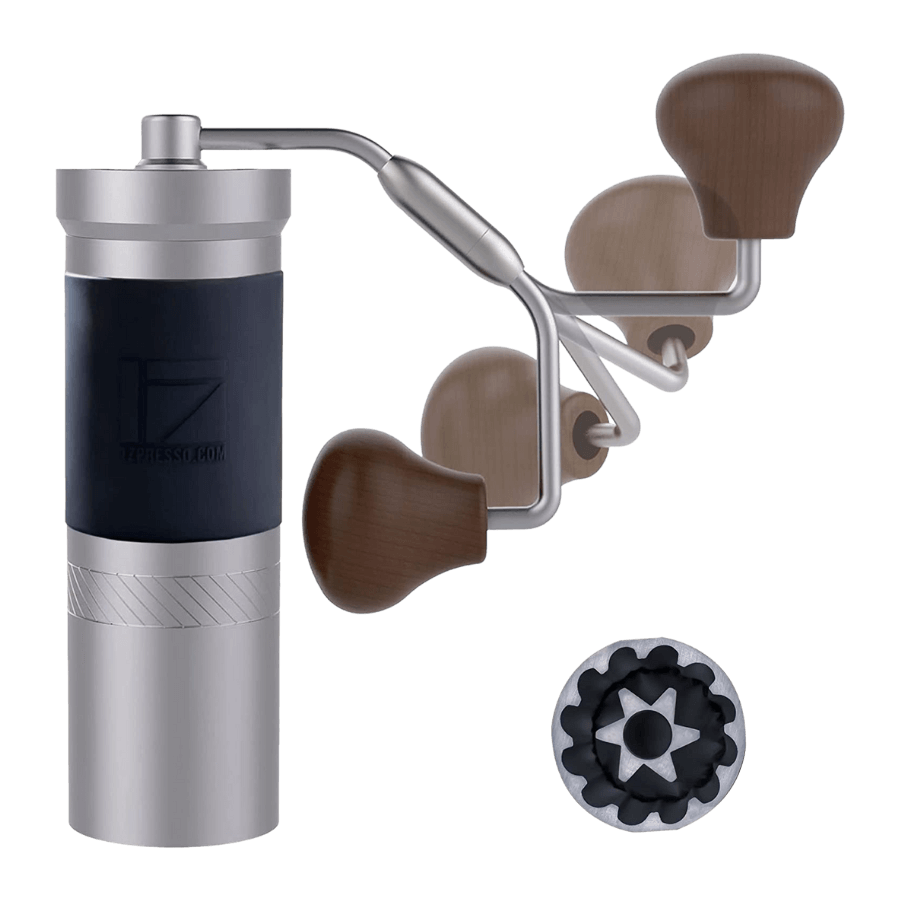
1Zpresso JX Pro highlights:
- 48 mm stainless steel conical burr
- 200 grind settings
- 12.5 microns per click
- Hopper capacity 35 g
The 1Zpresso JX Pro costs about a third as much as the Fellow Ode Gen 2 and has about seven times as many grind settings, including a robust espresso range. The major drawback compared to the Ode is that the JX Pro is a hand grinder.
If you don’t mind putting in some manual labor for your coffee every day, then the JX Pro is far more affordable and versatile than the Ode. If, however, you’d rather get your coffee grounds at the push of a button, an electric grinder like this Fellow Ode will do the job quite nicely.
Read our 1zpresso JX Pro review for more details on this grinder.
What to Do with All Those Coffee Grounds?
Grinding coffee beans is only the first step in brewing a delicious cup of coffee. Read our pour-over or French press brew guide for a comprehensive look at how to make the most of every part of the brewing process.


